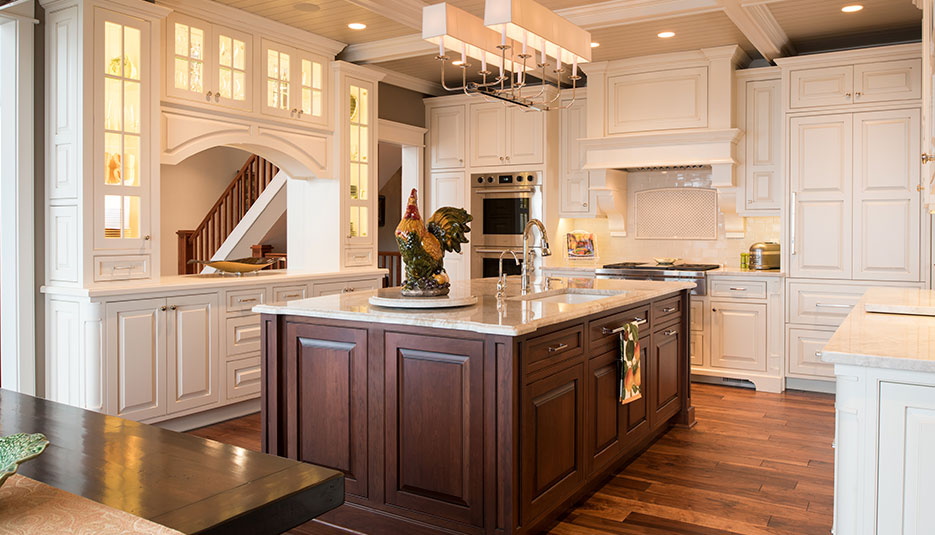
Differences in designing a Modern kitchen versus a Traditional Kitchen
Designing a modern kitchen often involves incorporating contemporary elements and utilizing the latest technology, while a traditional kitchen typically emphasizes classic aesthetics and a timeless feel. Here are some key differences in designing a modern kitchen versus a traditional kitchen:
- Style and Aesthetics:
- Modern Kitchen: Modern kitchens feature sleek and minimalist designs with clean lines, often utilizing materials like stainless steel, glass, and concrete. They focus on simplicity and functionality.
- Traditional Kitchen: Traditional kitchens embrace a more ornate and detailed aesthetic, with elements like raised-panel cabinets, intricate molding, and decorative hardware. They often incorporate natural materials such as wood and stone for a warm and inviting atmosphere.
- Colors and Finishes:
- Modern Kitchen: Modern kitchens tend to favor neutral color palettes, including whites, grays, and blacks. Bold accents or pops of color may be used sparingly. Smooth and glossy finishes are common, such as high-gloss cabinetry or polished countertops.
- Traditional Kitchen: Traditional kitchens may feature warmer color schemes, including shades of brown, cream, or pastels. Rich, natural finishes like stained or painted wood cabinets are prevalent, and textures such as distressing or glazing may be used to add character.
- Cabinetry and Storage:
- Modern Kitchen: Modern kitchens prioritize clean, streamlined cabinetry with flat or slab-style doors. They often feature handle-less cabinets, opting for push-to-open mechanisms or integrated handles. Storage solutions are designed to maximize space and efficiency, with pull-out drawers and built-in organizers.
- Traditional Kitchen: Traditional kitchens often showcase framed cabinetry with raised-panel doors and decorative moldings. Cabinets may have visible hardware, such as ornate knobs or handles. They may incorporate glass-front cabinets or open shelving for displaying china or other collectibles.
- Appliances and Technology:
- Modern Kitchen: Modern kitchens integrate the latest technology, including high-end appliances with advanced features. Energy-efficient appliances, smart home integration, touch-screen controls, and built-in charging stations are common in modern kitchen designs.
- Traditional Kitchen: Traditional kitchens may feature appliances with classic designs or retro-inspired elements, but the emphasis is typically on functionality rather than cutting-edge technology. Vintage-style appliances or range hoods might be incorporated to maintain a traditional aesthetic.
- Lighting:
- Modern Kitchen: Modern kitchens often incorporate sleek and energy-efficient lighting fixtures, such as recessed lights, track lighting, or pendant lights with clean and minimalist designs. Under-cabinet lighting is commonly used to provide task lighting.
- Traditional Kitchen: Traditional kitchens tend to feature more ornate and decorative lighting fixtures, such as chandeliers, sconces, or pendant lights with intricate detailing. They may utilize warm, ambient lighting to create a cozy atmosphere.
It’s important to note that these are general differences, and many kitchen designs can incorporate elements from both modern and traditional styles, creating a transitional or eclectic look that suits individual preferences. Ultimately, the design of a kitchen should reflect the homeowner’s taste, lifestyle, and functional needs.




